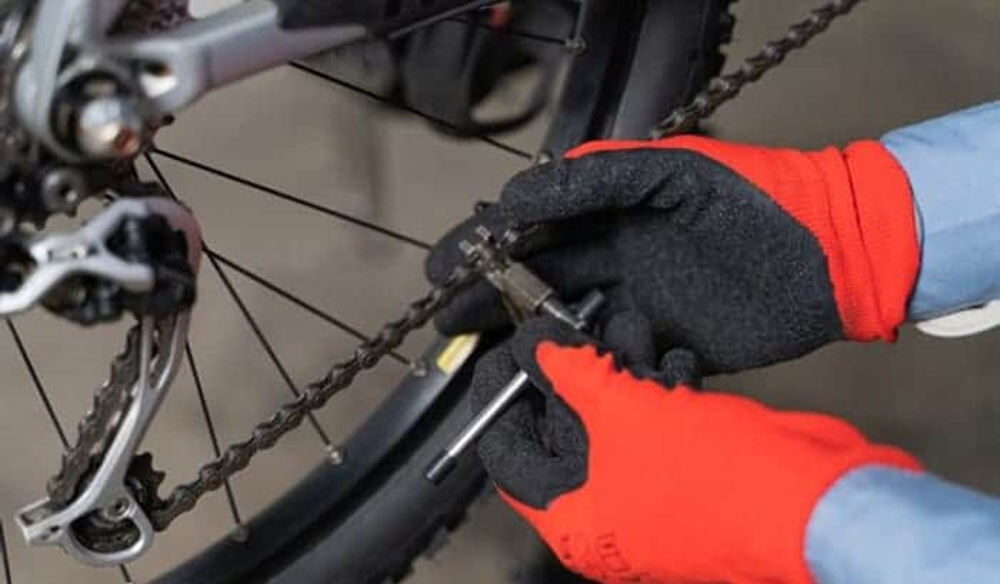Off-Road Electric Bike Safety Tips
Going off-road electric bike requires you to do some research before hitting the road. It takes some effort to stay safe to ensure you have the ultimate fun on your next ride.
1. Know the law
Many places classify e-bikes as motor vehicles and ban them from traditional bike paths. If in doubt and you see a sign indicating no motor vehicles are allowed on the path, turn off your electric bike.
At the federal level, the Forest Service, the Bureau of Land Management, and the National Park Service all prohibit e-bikes on nature-paved trails that do not allow motorized vehicles.
State regulations change and change regularly as local legislatures re-evaluate the use of electric mountain bikes on multi-use and off-road trails. Electric mountain bikes are not often encountered in many places enough to warrant a law specifically for them. For example, 25% of state legislatures have never seen the need to address the use of electric mountain bikes.
Only a few states mention the use of electric bikes on non-motorized lanes. Of the 22 states that responded to the International Mountain Bike Association’s Natural Surface Trails survey on its e-bike laws, only four allowed e-bikes on non-motorized trails. A further six allow the use of e-bikes on such trails under special circumstances, such as powered mobility devices.
Learn about the rules for riding an e-bike in your specific area, and check the laws and regulations before buying a model. Doing so will save you time and keep you safe on the road.

Today, there are many types of bicycle cleaning and maintenance products, including various greases, chain lubricants, cleaners, etc., and many products are almost the same chemical composition.
As mountain bikes became popular in the ’80s, Hank Krause, a scientist specializing in friction, lubrication, and wear, jumped on the bandwagon. It was an era of rapid innovation, but Krauss noticed that the industry was severely lacking in one important technical area: efficient, high-performance chain lubricants.
“At that time, a lot of people used motor oil, some people used cooking oil, some people used hot wax dips and other methods to lubricate the chain,” Krause told Bicycle magazine.
He pointed out that there weren’t any lubricants specifically designed for bicycles at the time, and most of the products came from the hardware industry. The lubes used at the time were particularly unsuitable for mountain biking. “They leave behind a moist, sticky film that becomes contaminants and dirt that makes the chain dirty,” Krauss said.
So, led by other experts in tribology, Krause used what he learned while working at Mobil to start Finish Line in 1988 with dry bicycle chain lube as the company’s first product.
Learn more about dry lube, what it is, how to use it and when to use it.
What is Dry Chain Lube?
First of all, the dry lubricants from the industry are very different from the bicycle dry chain lubricants mentioned here and cannot be used on bicycles. “Some dry lubricants are 100 percent solids,” Rouse explained.
Dry chain lubes, on the other hand, contain only a small amount of oil, along with additives that dry out and form a “waxy film”, as well as other corrosion-preventing additives and solid additives that aid lubrication. These solids are usually a mixture of polytetrafluoroethylene (Teflon), synthetic ceramics (boron nitride), molybdenum or graphite, which reduce friction between the metal surfaces of the chain. Teflon is most commonly used, but Krauss said his company is now focusing more on ceramics, especially nano-ceramic boron nitrides, because it has proven to be more effective. (Similarly, you’ll find synthetic ceramics widely used in cookware, automotive coatings, and more.)
In terms of dryness, the order of chain lubricants is usually as follows: Waxy → Dry → Wet.
This can vary by brand, Krause noted. His Finish Line company differentiates between dry lubricants and waxy lubricants, while some companies sell waxy lubricants as dry lubricants. A true waxy lube is oil-free, so, technically, a true waxy lube would be the driest option. But wax-based lubricants in the bicycle industry are not so dry, and there are no relevant industry technical regulations.
According to Krause, “dry film” lubricants are the driest — though not used by chains — because they only use solid lubricant powders; finish line’s Pedal Cleat lubricant is a good example. At the other extreme are wet lubricants, these sticky greases just to stick to the chain well.
Should I use dry chain lube?
The simple answer is: probably. This is a great option for mountain bikers and other trail riders. It’s designed to be ridden in dusty, gritty conditions, and it can handle lightly wet conditions. “Most cyclists would benefit from using a dry bike chain lubricant, so if you’re a commuter, or an ATV gamer, this is really a great option,” Krause said. “
But in some cases, wet chain lube is definitely a better choice. For one, it’s far superior in really wet riding conditions—Klaus likens it to a raincoat on a chain. In addition, it is more durable than dry lube and is suitable for long-distance enthusiasts and professional riders who ride 160 kilometers or more. Krause said: “Most pro road riders prefer to use wet lube because it’s quieter and silkier. If you’re crossing a stream in extreme wet weather, or doing a 100km road ride and you’re going downhill Rain, or if you’re a pro and your drivetrain is under a lot of stress, wet lube is definitely a better choice.” The downside is that wet chain lube tends to attract dirt. But as Krause points out, at pro events, many riders have their bikes cleaned by the team’s mechanics every day, so they don’t have to deal with oily chains themselves.

2. Watch out for other riders
If you are riding in an area where off-road use of e-bikes is allowed, be aware of other off-road users. If you approach walkers or other cyclists from behind, be prepared to alert them with a horn, bell or verbally. They may not hear you or your bike. Showing others your presence on the road also means you need to pay attention to anyone behind you. Leave your headphones and earbuds at home. You need to keep your ears open if other riders or joggers need to pass you on the trail.
3. Know your limits
When riding off-road, if you get tired, you may rely too much on your bike’s motor to get home. However, the distance the motor takes you depends on the wattage of the motor, the power of the battery, and how many times you use the bike’s throttle. Relying on a full-powered motor will wear it out quickly, and it could leave you tired and stuck in a far-off place with no way to return.
To avoid this, don’t ride further on your electric mountain bike than you can get back under power.
4. Install the torque arm for the front motorcycle
If your bike has a motor on the front hub, the fork can fail, especially on jump landings. There are several ways to prevent a potentially dangerous failure of your fork.
Don’t ride an e-bike with a front hub motor and front suspension fork. Also, don’t install a high-powered motor on the front wheel. If you want a high-performance e-bike, choose a model that has the engine in the middle of the bike frame and has a professional design to keep it safe. If you do have a front hub motor, install a torque arm to hold the fork in place.
Electric Bike Road Safety Tips
When riding on the road, your e-bike has more options than off-road. Most states allow e-bikes to share bike paths with other bikes. To be safe, learn about your state’s laws and how they affect your e-bike and riding choices.
The Best Chain Breaker Tools for Removing Chain Links
A bicycle chain breaker tool is a simple device that helps people remove the metal pin connecting two bike chain links. It may seem a straightforward process, but the inherent chain design makes rivet removal difficult without the correct tool. That is why it is best for bicycle owners to have a chain breaker in their toolbox.
Here are some of the factors one must consider when buying a chain breaker.
Compatibility
Although chain breakers perform the same function, no single product can accommodate all bike chain sizes and groupset types. Most products can only sit several sizes of bike chains on the breaker block or shelf.
For example, a chain breaker may only accept Shimano and SRAM groupsets, but not Campagnolo speed chains. The reason here is that Campagnolo chains have a greater width than the two other systems. Hence, a Shimano 12–speed may already be equivalent to a Campagnolo 11–speed, give or take a few millimeters. Some products also accommodate a 12–speed chain, but not an 11–speed.
That is why buyers must read the product specifications carefully, ensuring it is compatible with their bicycle’s chain system. Otherwise, they will only waste money on something they will not use.
Ease of Use
A chain breaker’s ease of operation is a function of its design. A well–crafted and thoughtfully designed chain breaker will make it effortless to use.
For instance, the handle’s grip and lever length are two crucial factors determining a chain breaker’s hassle–free operation. The handle must be comfortable to hold and not slip off the hand. Meanwhile, the lever must be sufficiently long to reduce the force required to turn the pushpin through the chainplates and peg.
It would also be great if the chain breaker has a groove for checking how far the pushpin has advanced through the slot.
Construction
In general, an all–metal construction guarantees durability and strength. Unfortunately, these products are often heavy and unwieldy. On the other hand, alloys provide an excellent balance between lightweight and strength. Some products also come with aluminum construction, while others feature high–carbon steel.
We recommend researching the pros and cons of each material to help buyers decide which product is best for them. Buyers must know that high–density, high–quality materials often command a high price.

Additional Features
Chain breaker manufacturers continue to outdo each other by adding excellent features to their products. It would be wise to examine each extra attribute to determine if it adds value to the purchase.
For example, some products come with other bike chain repair tools, such as a chain gauge, link plier, hook, bonus pushpins, and extra chain links. Companies can also integrate more subtle features in their products, including a ring or carabiner slot and a hidden compartment for small tools.
Others may design their chain breakers with a secondary shelf for loosening super–tight chains.
Price
Several factors can determine a chain breaker’s price. For instance, some online retailers offer exceptional discounts to entice customers. Amazon and leading e–commerce sites are always available to give customers a great bargain.
Location can also impact a chain breaker’s price. For example, if Canadians want to buy a chain breaker tool Canadian Tire will be a no–brainer.
It would be best to check the product’s construction, compatibility, ease of use, and extra features to assess its overall value against the price.
All chain breakers are the same because they serve the same purpose – push the metal pin or rivet that connects two pairs of outer and inner plates that form a single chain link. This tool can also drive a new chain pin or when replacing the chainplates.
While the function is the same across all chain breaker types, they differ in their rivet size compatibility, pin design, tool size, price, and inherent features. For example, a 5-speed chain is wider than a 7-speed chain.
That is why bicycle owners must have excellent knowledge of their bike’s chaining before shopping for a bike chain breaker tool. Of course, find out more useful tools that are really necessary for your bike because there will be cases where you will need them. Such as bike cable cutters, bike degreasers and bike chain cleaners.
Do I Need a Chain Breaker Tool
A chain breaker tool is a must-have for any bicycle owner or anyone who has a vehicle with a chain drivetrain.
While it is possible to disconnect the links without special tools, the process can be intimidating. There is also the risk of damaging the chain, prompting the owner to buy a new one.
How Do You Break a Chain Without a Tool
It is possible to break a chain without a tool using three things: a solid block with a small hole for positioning the chain link, a thin nail for pushing the chain rivet without getting lodged into the plates, and a hammer for driving the nail.
Place the chain link on a solid block, preferably a small nut, ensuring the rivet is over the nut’s hole. The hole must be big enough for the pin to pass through but small enough to prevent the plates from bending.
Position the nail on the chain pin’s flat surface before hammering it down. It would be best to carefully tap the rivet until it comes out on the opposite side. However, be cautious not to push the pin too much so that it falls off. It should still connect to the other side’s outer chainplate.
Slowly wiggle the chain to free it from its connection.
Please leave us messages to know more about us.
 Shuangye ebike
Shuangye ebike
